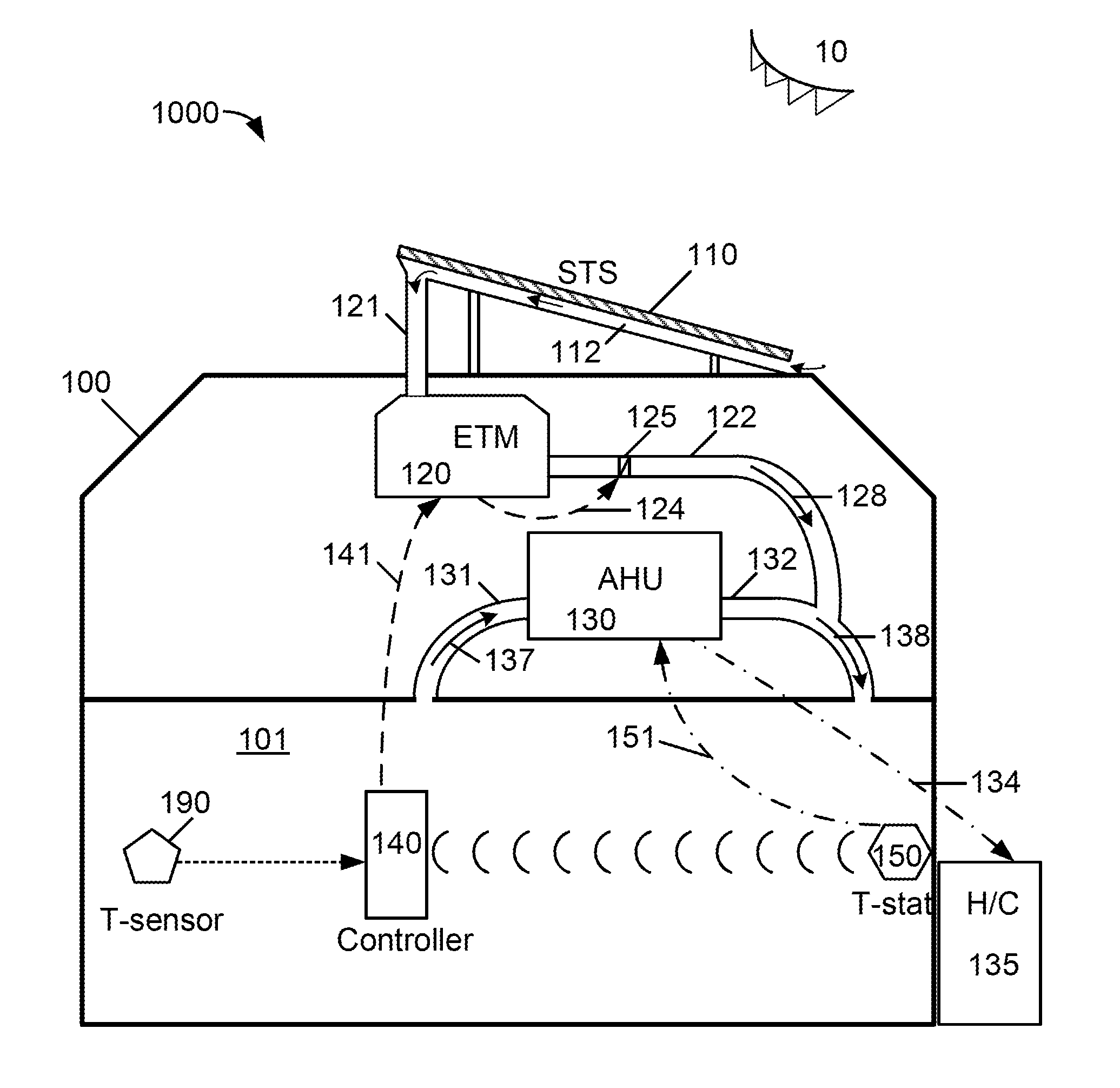Method and system for healthy home zoning control configured for efficient energy use and conservation of energy resources
a zoning control and healthy technology, applied in the field of solar energy application for home space conditioning and zoning control, can solve the problems of increasing the rate of warming, still certain limitations, and increasing sea levels, and achieves the effects of optimizing thermal energy distribution, convenient use, and efficient energy us
- Summary
- Abstract
- Description
- Claims
- Application Information
AI Technical Summary
Benefits of technology
Problems solved by technology
Method used
Image
Examples
Embodiment Construction
[0026]The present invention relates to operation of a home energy system for building zone control. More particularly, the present invention provides a system and method for providing space conditioning zone control for a building structure with multiple spatial zones within a home energy system utilizing solar thermal energy. Merely, by way of example, the present invention has been applied to transfer solar thermal energy in coordination with an operation of auxiliary thermal module for providing space conditioning for multiple spatial zones of a building structure with efficient energy use and conservation of energy resources, but it would be recognized that the invention has a much broader range of applications.
[0027]FIG. 1 is a simplified diagram of a home energy system with space conditioning zone control according to an embodiment of the present invention. This diagram is merely an example, which should not unduly limit the scope of the claims herein. One of ordinary skill in...
PUM
 Login to View More
Login to View More Abstract
Description
Claims
Application Information
 Login to View More
Login to View More - R&D
- Intellectual Property
- Life Sciences
- Materials
- Tech Scout
- Unparalleled Data Quality
- Higher Quality Content
- 60% Fewer Hallucinations
Browse by: Latest US Patents, China's latest patents, Technical Efficacy Thesaurus, Application Domain, Technology Topic, Popular Technical Reports.
© 2025 PatSnap. All rights reserved.Legal|Privacy policy|Modern Slavery Act Transparency Statement|Sitemap|About US| Contact US: help@patsnap.com



